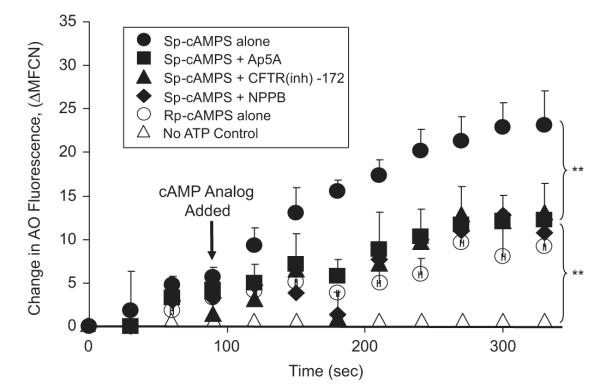Fig. 6.

Cyclic AMP-activated acidification in isolated PM-PLS is affected by CFTR chloride channel inhibitors. The prepared PM-PLS samples were diluted into the chloride-rich 100 mM KCl relaxation buffer with or without 1 mM ATP, 4 μM AO, and various channel inhibitors for 1 min and then analyzed by flow cytometry at 15-s intervals at room temperature. Without activation of V-ATPase in the no-ATP control, no proton influx or acidification occurred. Addition of ATP and the nonhydrolyzable cAMP agonist, Sp-cAMPS (40 μM) resulted in the maximum acidification of the PM-PLS (solid circles). Inclusion of CFTR chloride channel inhibitors, Ap5A (1 mM) or CFTRinh-172 (5 μM), reduced the extent of acidification to ~54% of the maximum value at the last time point measured. NPPB, a non-CFTR chloride channel blocker (100 μM), inhibited the acidification by ~52%. The cAMP antagonist Rp-cAMPS gave rise to ~46% of the maximum acidification. All experimental data represent triplicate runs. The vertical bars represent the standard deviations from the mean. **p<0.01 by one-way ANOVA.
